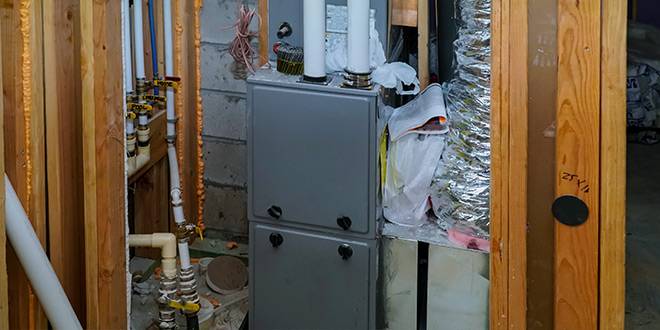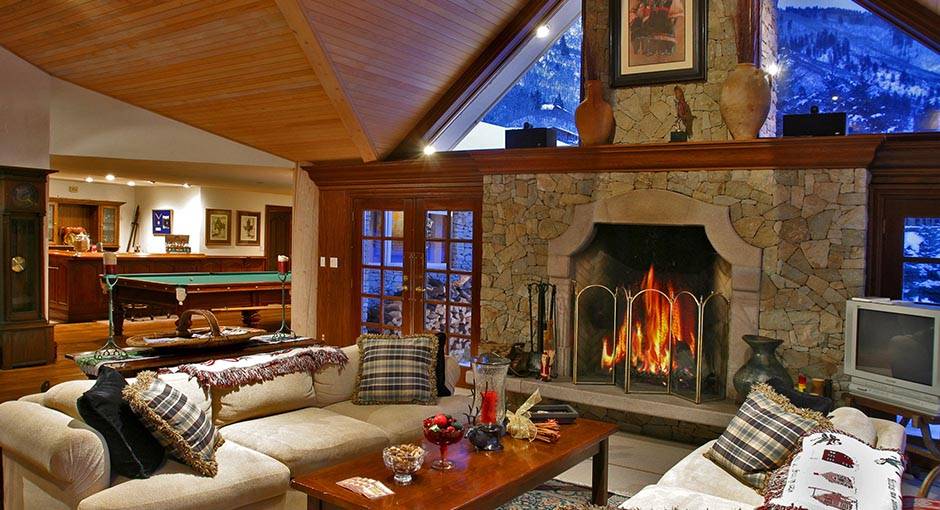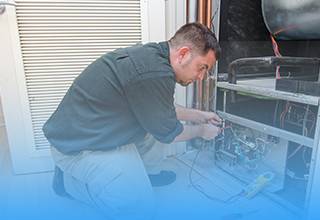
When it comes to keeping your home cozy and warm during the colder months, choosing the right type of furnace is crucial. In the world of home heating, single-stage and two-stage furnaces are among the most popular options, each offering distinct advantages and functionalities. But what exactly sets these two types apart, and which one is the best fit for your home?
The answer lies in understanding their operational differences and how these impact overall heating efficiency, comfort, and cost. In this article, we dive deep into the mechanics, benefits, and limitations of both furnace types. Whether you’re installing a new heating system or considering an upgrade, this comprehensive guide will arm you with the knowledge you need to make an informed decision. Let’s explore the intricate world of single-stage and two-stage furnaces and find out which one is ideally suited to meet your heating needs.
Understanding Single-Stage Furnaces
The Basics of Single-Stage Furnaces
Single-stage furnaces, often a common feature in many homes, operate on a simple yet effective principle. They have only one mode of operation – full blast. This means that whenever your home needs heating, the furnace ignites and operates at maximum capacity until the desired temperature is reached, after which it shuts off. This on-and-off cycle is characteristic of single-stage furnaces and is key to understanding their operation and efficiency.
Advantages of Single-Stage Furnaces
One of the most significant advantages of single-stage furnaces is their simplicity. This simplicity translates to a lower initial purchase cost, making them an attractive option for homeowners on a budget. Moreover, their straightforward design also means easier maintenance and repairs, which further adds to their cost-effectiveness.
Another benefit is the proven reliability of single-stage furnaces. With fewer components and a less complex design than their two-stage counterparts, there are fewer parts that can malfunction or require repair. This reliability is a crucial factor for many homeowners, especially in areas where a dependable heat source is essential during harsh winter months.
Limitations of Single-Stage Furnaces
However, the simplicity of single-stage furnaces comes with certain limitations. The most notable is the lack of flexibility in operation. Since these furnaces only operate at one high level of output, they can often lead to temporary overheating, followed by periods of cooling, leading to uneven temperatures in your home. This can affect comfort levels, especially in larger or multi-level homes.
Additionally, because they always run at full capacity, single-stage furnaces are not as energy-efficient as two-stage models. They consume more fuel every time they turn on, which can lead to higher energy bills, particularly in regions with severe winters where the furnace needs to run frequently.
Ideal Usage Scenarios
Single-stage furnaces are best suited for homes in regions with milder winters or for homeowners who require a straightforward heating solution without the need for advanced features. They are also ideal for smaller homes or spaces where maintaining a consistent temperature isn’t as challenging.
For homeowners who prioritize upfront savings and are looking for a reliable and easy-to-maintain heating solution, a single-stage furnace is an excellent choice.
While these furnaces may not offer the same level of efficiency or comfort control as two-stage models, their durability and cost-effectiveness make them a worthy contender in the furnace market.
Exploring Two-Stage Furnaces
The Mechanics of Two-Stage Furnaces
Two-stage furnaces represent a step up in complexity and efficiency from their single-stage counterparts. Unlike single-stage furnaces, which only operate at full capacity, two-stage furnaces can run at two different levels: full and partial (usually around 65% of the full capacity). This dual operation mode is the defining feature of two-stage furnaces and is crucial for understanding their advantages in terms of efficiency and comfort.
The first stage operates at a reduced capacity, which is sufficient to meet the majority of your heating needs. It’s during milder weather conditions that this stage shows its efficiency, running longer at a lower intensity to maintain a consistent temperature. The second stage kicks in only when there’s a significant drop in temperature or a rapid need to increase the warmth in your home.
Benefits of Two-Stage Furnaces
The primary advantage of a two-stage furnace lies in its ability to provide more consistent and comfortable heat distribution throughout the home. By operating mostly in the first stage, these furnaces eliminate the frequent on-and-off cycling typical of single-stage models, thereby reducing temperature fluctuations and creating a more stable indoor environment.
Energy efficiency is another significant benefit. The ability to operate at a lower capacity for most of the time means two-stage furnaces consume less energy, leading to reduced utility bills. This efficiency also translates to less strain on furnace components, potentially extending the lifespan of the unit.
Furthermore, two-stage furnaces tend to operate more quietly than single-stage furnaces, particularly when running in the lower stage. This reduced noise level enhances the overall comfort in your home, making the heating system less intrusive.
Potential Drawbacks of Two-Stage Furnaces
The advanced functionality of two-stage furnaces comes with a higher initial cost compared to single-stage models. This can be a deciding factor for homeowners with a strict budget. Additionally, the complexity of these systems may lead to higher maintenance and repair costs over time.
Moreover, the installation of a two-stage furnace might require more time and expertise, potentially increasing the installation costs. It’s essential to have these furnaces installed by a professional to ensure they operate at their maximum efficiency.
Ideal Applications
Two-stage furnaces are particularly well-suited for homes in regions with fluctuating temperatures or for larger homes where consistent heat distribution is challenging. They are an excellent choice for those who prioritize comfort, energy efficiency, and quieter operation.
Homeowners willing to invest more upfront for long-term benefits, such as lower energy bills and enhanced comfort, will find two-stage furnaces to be a rewarding investment. While the initial cost is higher, the savings in energy consumption and improved home comfort can be significant.
Comparative Analysis: Single-Stage vs Two-Stage Furnaces
Efficiency and Cost
- Single-Stage Furnaces: These units are less expensive upfront, making them an attractive option for budget-conscious homeowners. However, their continuous full-capacity operation leads to higher energy consumption, which can result in increased utility bills over time.
- Two-Stage Furnaces: Initially more costly, two-stage furnaces offer greater energy efficiency. By operating most of the time at a lower capacity, they consume less fuel, leading to significant savings in energy costs in the long run. This makes them a cost-effective choice over their lifespan.
Performance and Comfort

- Single-Stage Furnaces: The on-off cycling of single-stage furnaces can lead to temperature fluctuations in the home, potentially causing inconsistent heating. This might be more noticeable in larger or multi-story homes.
- Two-Stage Furnaces: With their ability to adjust output, two-stage furnaces provide more consistent and even heating. This reduces hot and cold spots, ensuring a more comfortable living environment, especially in larger homes.
Climate Suitability
- Single-Stage Furnaces: These furnaces are generally more suited to milder climates where the demand for heating isn’t as intense or frequent.
- Two-Stage Furnaces: Ideal for areas with varying temperatures or extreme cold, as they can adjust their output to provide just the right amount of heating as needed.
Maintenance and Longevity

- Single-Stage Furnaces: Simplicity in design means potentially lower maintenance costs and easier repairs. However, the frequent cycling on and off can lead to more wear and tear over time.
- Two-Stage Furnaces: Although they may require more sophisticated maintenance due to their complexity, their reduced cycling can result in less wear and tear, potentially extending the unit’s lifespan.
Noise Level
- Single-Stage Furnaces: These can be noisier due to the high-capacity blasts when operating.
- Two-Stage Furnaces: Generally operate more quietly, especially when running in the lower stage, contributing to a more peaceful home environment.
Conclusion
The choice between single-stage and two-stage furnaces ultimately depends on individual needs, budget, and the specific conditions of the home and climate. Single-stage furnaces offer a straightforward, cost-effective solution for simpler heating needs, while two-stage furnaces provide enhanced comfort, efficiency, and flexibility, albeit at a higher initial cost. By weighing these factors, homeowners can make an informed decision that best suits their comfort and financial requirements.
Making the Right Choice for Your Home

When faced with the decision between a single-stage and a two-stage furnace, several key factors should be considered to ensure that you make the best choice for your home’s heating needs.
Assessing Your Heating Requirements
The first step is to assess your heating requirements. Consider the size of your home, the typical winter temperatures in your region, and how evenly you want the heat distributed throughout your home. Larger homes or those with multiple floors may benefit more from the consistent and even heating of a two-stage furnace.
Budget Considerations
Budget is another critical factor. If upfront cost is a primary concern, a single-stage furnace might be the more suitable option. However, it’s important to factor in long-term costs too. A two-stage furnace, while more expensive initially, can offer energy savings that accumulate over time, potentially offsetting the higher upfront cost.
Energy Efficiency Goals
If reducing your carbon footprint or lowering your energy bills is important to you, a two-stage furnace is generally more efficient. These furnaces adjust their output based on the demand, which can lead to significant energy savings, especially in climates with fluctuating temperatures.
Comfort Preferences
Comfort is a subjective but vital aspect of your decision. If you are sensitive to temperature variations or prefer a consistently warm environment, the two-stage furnace, with its ability to provide a more stable and even heat distribution, might be the better choice.
Consulting with Professionals
Finally, it’s advisable to consult with HVAC professionals, like those at Iceberg Mechanical. They can provide valuable insights based on their experience and knowledge of local climate and housing conditions. A professional assessment can help you understand which furnace type would work best for your specific situation.
Conclusion
In conclusion, both single-stage and two-stage furnaces have their merits. The decision ultimately hinges on your personal needs, preferences, and circumstances. By carefully considering these factors and seeking professional advice, you can select a furnace that not only keeps your home warm and comfortable but also aligns with your financial and energy efficiency goals.
Ready to Heat Your Home?
Embrace a warm and efficient winter with Iceberg Mechanical! 🔥😊 Whether you’re leaning towards a single-stage or a two-stage furnace, our team is here to guide you. Contact us for expert advice, top-notch installation, and reliable service. Make this winter your home’s coziest yet — let’s start your furnace journey today! 📞💼✨





